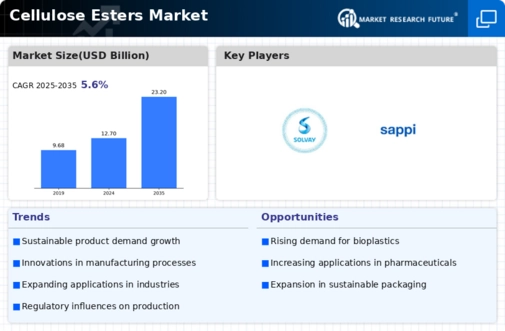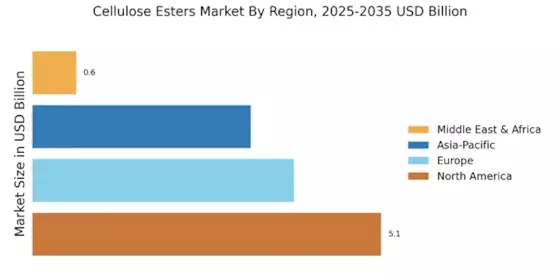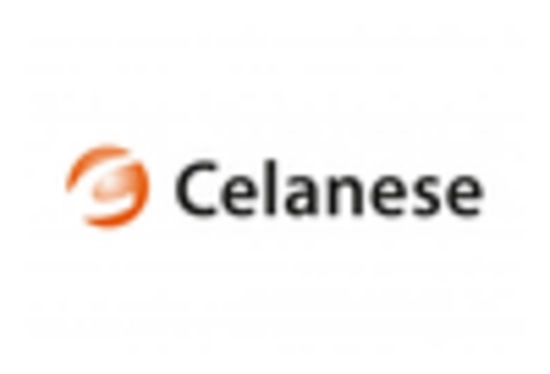Growth in Pharmaceutical Applications
The Cellulose Esters Market is witnessing an expansion in pharmaceutical applications, particularly in drug delivery systems and excipients. Cellulose esters are favored for their biocompatibility and ability to control drug release rates, making them essential in the formulation of various medications. The pharmaceutical sector's increasing focus on innovative drug delivery methods is likely to drive the demand for cellulose esters, with projections indicating a robust growth trajectory. In 2025, the market for cellulose esters in pharmaceuticals is expected to reflect a substantial increase, as manufacturers prioritize the development of advanced formulations. This trend underscores the importance of cellulose esters in enhancing therapeutic efficacy and patient compliance.
Expanding Applications in Food Industry
The Cellulose Esters Market is experiencing growth due to the expanding applications of cellulose esters in the food sector. These materials are utilized as food additives, stabilizers, and thickening agents, contributing to improved texture and shelf life of various products. The increasing consumer demand for processed and convenience foods is likely to drive the adoption of cellulose esters, as manufacturers seek to enhance product quality and safety. In 2025, the food industry is expected to represent a significant segment of the cellulose esters market, reflecting a broader trend towards the incorporation of functional ingredients. This growth may be further supported by regulatory approvals and consumer preferences for clean-label products.
Increased Use in Personal Care Products
The Cellulose Esters Market is benefiting from the rising incorporation of cellulose esters in personal care products, including cosmetics and skincare formulations. These materials are prized for their thickening, emulsifying, and film-forming properties, which enhance product performance and consumer experience. As the personal care industry continues to evolve, the demand for natural and sustainable ingredients is likely to propel the use of cellulose esters. In 2025, the market for cellulose esters in personal care is anticipated to grow significantly, driven by consumer preferences for eco-friendly products. This trend suggests a shift towards formulations that not only meet performance standards but also align with sustainability goals.
Rising Demand in Coatings and Adhesives
The Cellulose Esters Market is experiencing a notable surge in demand for coatings and adhesives, driven by the construction and automotive sectors. These industries increasingly favor cellulose esters due to their excellent film-forming properties and compatibility with various solvents. In 2025, the coatings segment is projected to account for a significant share of the cellulose esters market, reflecting a shift towards eco-friendly and high-performance materials. The versatility of cellulose esters allows for their use in a wide range of applications, from protective coatings to adhesives, which further enhances their market appeal. As manufacturers seek sustainable alternatives, cellulose esters are likely to gain traction, potentially leading to a compound annual growth rate that could exceed industry averages.
Technological Innovations in Production
The Cellulose Esters Market is poised for growth due to ongoing technological innovations in production processes. Advances in manufacturing techniques are enhancing the efficiency and scalability of cellulose ester production, which may lead to reduced costs and improved product quality. Innovations such as solvent-free processes and the use of renewable resources are becoming increasingly prevalent, aligning with the industry's sustainability objectives. As these technologies mature, they are likely to attract investment and drive market expansion. By 2025, the impact of these innovations could be substantial, potentially reshaping the competitive landscape of the cellulose esters market and enabling manufacturers to meet rising demand more effectively.


















Leave a Comment